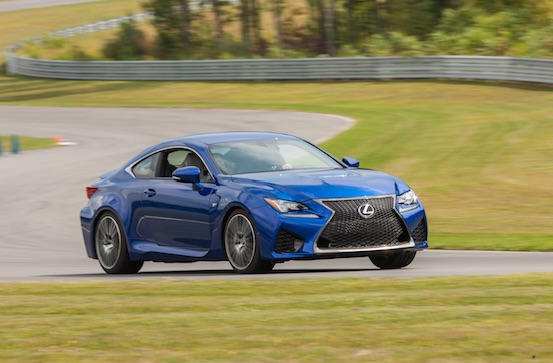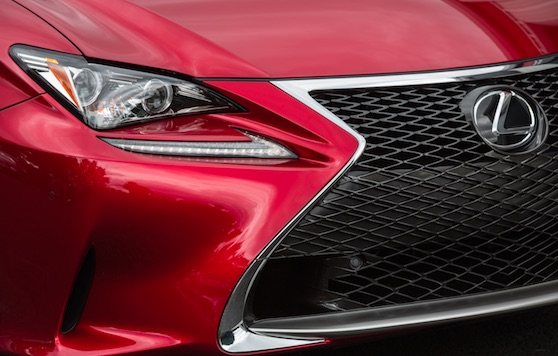Lexus RC-F
- October 30, 2014
- Lexus, New Model Introductions, On The Road: Driving Impressions, Road Noise, More Categories...
- Posted by Dan Hall
- Comments Off on Lexus RC-F
Monticello Raceway, Monticello, New York
Lexus is pushing forward with the F. This time with the all-new 2015 RC F sports coupe. Outfitted with a 467 horsepower 5.0 liter V8 with a close-ratio eight speed automatic transmission, this coupe delivers on Lexus’ promise to continue the fight in the luxury performance arena.
The Look
Showing it’s relationship to the LF-NX Concept shown at the 2013 Frankfurt Auto Show, the RC’s exterior design is aggressive. The rising beltline and stretched head and tail lamps give the vehicle an athletic look. The spindle grille contains the “F” motif repeated in the mesh with cooling ducts moving air to the vehicle’s oil coolers. Of course, the front hood is raised to accommodate the V8 and send the right message to other drivers.
The Sound
In the past Lexus’ were promoted with the promise of a silent powertrain. Not true today. The RC F has a larger-diameter exhaust system designed to reduce
backpressure and sound powerful, especially under acceleration. But Lexus has taken it beyond the exterior sound. Active Sound Control (ASC), lets the driver control enhanced exhaust, intake and mechanical sounds within the cabin. An electronic control unit mounted beneath the instrument panel (yes, in the cabin) takes input from engine sounds, including varying engine speed, vehicle speed and throttle position and generates powertrain sound within the vehicle. Cheating? You decide. But it’s pretty easy to get used to.
The Drive
Tuned at both the Fuji Speedway (which is the reason for the F moniker) and the Nürburgring, the RC F is clearly intended to be more than a daily driver. While Lexus may not be the first brand name that comes to mind when thinking of track days, this vehicle is more evidence that the Lexus image is continuing to change. AutoPacific joined media from around the world to test the RC F at Monticello. Aside from one trip mowing the lawn, we can attest to the true performance nature of the RC F.
The Data





